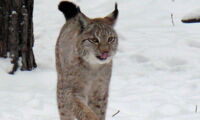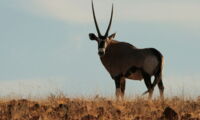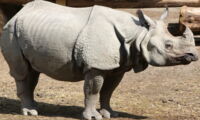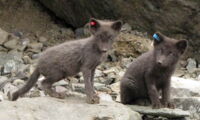The Leibniz-IZW is an internationally renowned German research institute. It is part of the Forschungsverbund Berlin e.V. and a member of the Leibniz Association. Our goal is to understand the adaptability of wildlife in the context of global change and to contribute to the enhancement of the survival of viable wildlife populations. For this purpose, we investigate the diversity of life histories, the mechanisms of evolutionary adaptations and their limits, including diseases, as well as the interrelations of wildlife with their environment and people. We use expertise from biology and veterinary medicine in an interdisciplinary approach to conduct fundamental and applied research – from the molecular to the landscape level – in close dialogue with the public and stakeholders. Additionally, we are committed to unique and high-quality services for the scientific community.
+++ Current information on African swine fever: The Leibniz-IZW conducts research on the population dynamics, on models of disease outbreaks in wild boars and on the ecology and human-wildlife interaction in urban areas. African swine fever is a reportable disease in domestic swine and therefor is the purview of the respective federal state laboratories and the Friedrich-Loeffler-Institut (Federal Research Institute for Animal Health) FLI. +++
News

The Eurasian lynx as a key to the conservation and future viability of the endangered Iberian lynx
Understanding the mechanisms which control reproduction in lynx is essential for their continued viability and effective conservation.
%20andreas%20wilting_izw-8pywdhv5sgbwv03.jpg)
Orang-utans on the ground
An international team of scientists studied how Bornean orang-utans cope with habitat modifications caused by logging in rainforests

Knut the polar bear’s medical legacy
Knut, the polar bear of the Berlin Zoological Garden, drowned in 2011 after suffering seizures and falling into the enclosure pond. Necropsy and histology at the Leibniz Institute for Zoo and Wildlife Research suggested the cause was encephalitis most likely due to viral infection. After one of the most intensive investigations in veterinary history for a single animal, utilising state-of-the-art pathological techniques and high-throughput next-generation molecular sequencing methods, the conclusions of the investigations are presented.

Eating poisonous plants saves life of gemsbok in Namibian desert
In drought periods browsing springbok (Antidorcas marsupialis) feed on all plant material they can find, while grazing gemsbok (Oryx gazella gazella), in contrast, switch their diet to a high proportion of poisonous plants – and they survive. These findings were just published in the scientific online journal PLOS ONE.
Read more … Eating poisonous plants saves life of gemsbok in Namibian desert

Imaging techniques can improve management and husbandry of rhinoceroses
High-resolution computed tomography and digital radiography in captive rhinos reveal that bone pathologies in the feet of these pachyderms are highly prevalent and diverse.
Read more … Imaging techniques can improve management and husbandry of rhinoceroses

Forscher entdecken neue Retroviren bei Eisbär Knut und Panda Bao Bao
Nach dem Tod des Eisbären Knut ergaben Untersuchungen am Leibniz-Institut für Zoo- und Wildtierforschung (IZW), dass Knut wohl an einer durch Viren verursachten Gehirnentzündung litt. Bei der Analyse seines Erbguts haben Forscher der Saar-Uni und des IZW nun neue Sequenzen endogener Retroviren entdeckt und charakterisiert. Auch bei dem Pandabären Bao Bao fanden sich diese Viren. Dass sich diese Viren bereits vor etwa 45 Millionen Jahren in das Genom eines Vorfahren der Bären eingebaut haben, zeigen die Forscher in einer aktuellen Studie in der Fachzeitschrift Virology. Darüber hinaus sind die neu entdeckten Viren denen im Erbgut von Fledermäusen, Rindern und sogar Menschen sehr ähnlich. Beim Menschen stehen einige von ihnen im Verdacht, Krankheiten mit auszulösen.
Read more … Forscher entdecken neue Retroviren bei Eisbär Knut und Panda Bao Bao

Wildtiererfassung neuen Stils:
In der Stadt lebende Wildtiere verschiedenster Arten stellen Bevölkerung und Behörden vor neue Herausforderungen. Das Leibniz-Institut für Zoo- und Wildtierforschung startet jetzt zwei beispielhafte Studien über Wildschweine und Igel in der Stadt. Alle Berliner sind aufgerufen, sich an der wissenschaftlichen Datenerhebung zu beteiligen und möglichst viele Wildtierbeobachtungen zu melden.

You are what (and where) you eat – mercury pollution threatens Arctic foxes
New scientific results show that arctic foxes accumulate dangerous levels of mercury if they live in coastal habitats and feed on prey which lives in the ocean. Researchers from the Leibniz Institute for Zoo and Wildlife Research, Moscow State University and the University of Iceland just published their discovery in the science online journal PLOS ONE.
Read more … You are what (and where) you eat – mercury pollution threatens Arctic foxes




